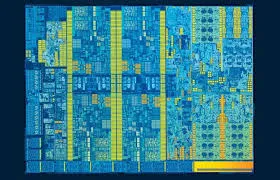Seek Thermal: Thermal Image Enables to see in the Dark
Thermal imaging enables one to see in the dark and even through walls in a ways which would be impossible for the naked eye. The thermal imaging technology functions by observing and differentiating between the infrared radiations emitted from various object.
There could be various reasons for using a thermal imaging camera which could range from tasks around the home to instances of searches and rescues. In the daily functions, it could be utilised in tracing water damage within ceilings and wall, as well as identifying the source, in discovering energy efficiencies in sealing around windows and doors or even in locating clogs within pipes.
It could also prove to be helpful to hunters, sailors or campers. A new form of infrared cameras which can clip straight into the smartphone has brought about this change. The camera – the Seek Thermal had been out for a while in the US but is now available in the UK and several other European countries for $250 which is a bit high but its versatility makes up for it.
The Seeks tends to plug into the power socket of the phone and is unusually modest. Though the model tends to be small, it seems tough enough and is covered with a protective waterproof case.
A Small Camera Attached to Smartphone – Thermal Imaging
Seek Thermal provides the thermal technology which was earlier only available to the military and other professionals. It is a small camera attached to the smartphone to provide thermal image of things around, portraying a temperature snapshot of the surrounding setting.
There are various usages for Seek and for DIY and home repair individuals, the camera could be utilised in helping to resolve issues in the pipes or to identify where heat tends to escape around windows or doors and much more.
Besides these, Seek is also useful for home security, to check for unwanted animals or humans prowling around the place especially at night. Fire up the app and one will get a live thermal image on the smartphone screen where the detection range is -40 degrees C to 330 degrees C and has a 20 degree to 36 degree field of vision.
It has the potentials of identifying heat sources as far as 2,000 feet away or as close as 8 inches. The Seek does not seem to have its own battery but instead depends on the power from the phone.
The advantage of it is that there are no additional wires needed and the need to recharge between uses does not arise. The downside is that the phone battery probably will make a huge hit when it is in use.
Thermal Camera/Thermal Xtra Range
The Seek Thermal system comprises of a camera attachment for the Android of iOS device with an app which portrays whatever the camera tends to capture.Seek sells two smartphone cameras attachments, the Thermal camera and the Thermal Xtra Range – XR, both of which are available for iOS or Android devices.
Difference between the two is that the XR can view objects twice as far as the original camera with the same clarityand has a manual focus feature. In case of iPhone, one would require a Lightning connector and iOS 7 or 8 and for Android, the need to run Jelly Bean 4.3.1 or later.
Once the Seek Thermal app has been installed, using the camera is very simple as plugging it into the phone. The app then will launch automatically and in case of Android, one may need to authorise it to connect with the camera. The setup seems easy and takes only a few seconds when one intends using the Seek








